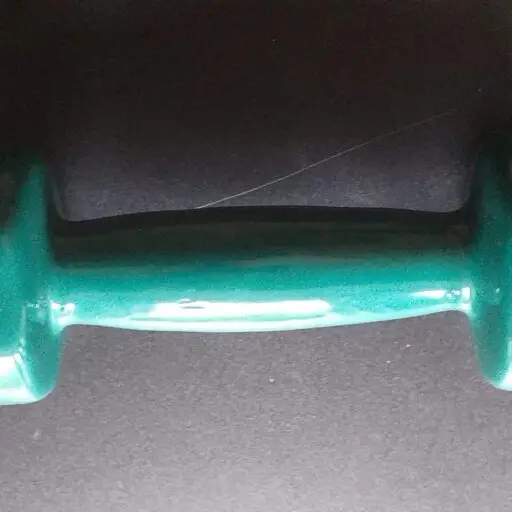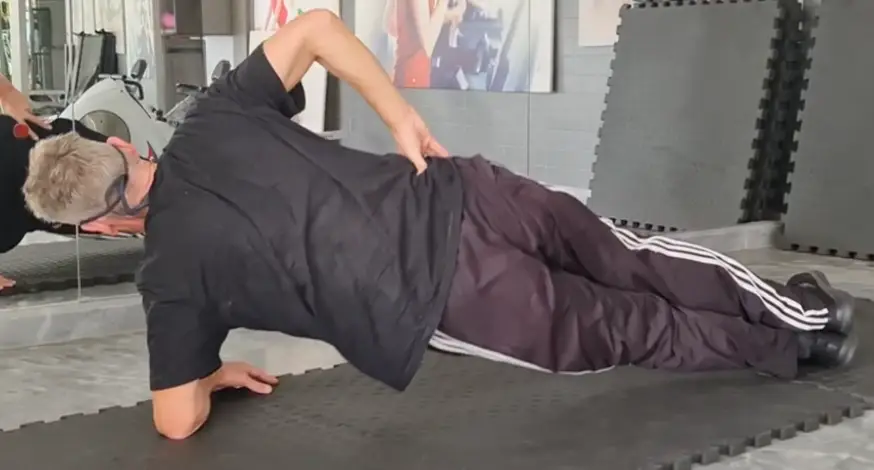All about the Side Plank
(Pilates)
BENEFITS & MUSCLES WORKED: Core, Obliques, Hips, Glutes, Posture
START POSITION: Start by lying on your side and sliding your lower elbow underneath your shoulder. Then turn your forearm out so that your hand is pointing directly away from you. Place your feet together, side by side, one on top of the other.
Note: The video below shows a more complex combination exercise, which is a mix of the Side Plank and a Scissors move with the legs at the top position:
NOTES: Place your upper hand on your hip (for stability). Note the slight turn of the head to the left (in the picture). This is a natural move to relieve pressure on the neck muscles. The Start position is where your back and legs are all in a nice straight line. Then, you will push up from your hips – try not to use your arms to assist you; they are there only for support and as an anchor to create the sloping angle from your knees to your neck. Don’t engage your legs – just let your hips pull them up. Keep everything still apart from the area you are working on (this is the case for most exercises).
The upward movement is relatively small (between 5 and 25 cm, depending on your physique). In the picture, the top position of the exercise is shown. The bottom of the move is where your spine is straight again and in line with your legs, as it was at the start. Don’t let yourself sink below this position – the spinal bend should only be on the top side.
This is the basic (and easiest) version of the Side Plank. To make it more complicated (and hence get better results), you can hold a small dumbbell in your upper hand, tucked firmly into your side just above the hip bone. There are more challenging versions of this exercise, which involve raising your upper arm to a vertical position (this can also be done with a dumbbell), and various ways to incorporate other exercises, such as the Side Scissors. These would be fairly advanced moves, and I recommend that, for now, you stick with the basic routine and learn all the exercises in the Mojoh Method so you can master the form and become stronger. At that point, you can step it all up and learn many more advanced moves to complement and enhance the ones you already know.
The exercises and techniques defined by The Mojoh Method are more than enough for most people to work out with regularly, and consequently achieve incredible improvements to their lives and wellbeing.
Side planks help stabilize the spine and improve strength in the spine and obliques. It’s a good idea to perform them alongside the standard Pilates Plank exercise as both exercises complement and balance each other perfectly. The Mojoh Method places them in two separate Pilates Groups (Pilates 1 and Pilates 2). This is because the Mojoh Method, in its basic form, is a comprehensive whole-body workout, and all the groupings and ordering of exercises and sessions have been carefully thought out and practiced. However, if your goal is to double up on Pilates and do half as much of the other groups, then it would make sense for you to adjust your schedule accordingly.

